- October 01, 2024
- By Jessica Weiss ’05
Prints made from fragmented 3D-scans of underwater shipwrecks. A patchwork textile that visualizes unhealthy air quality due to wildfire smoke. And an immersive audiovisual installation that explores the intersection of nature and industry in Baltimore.
Now through Dec. 6, the University of Maryland Art Gallery is showing a triennial exhibition of work by 15 faculty and adjunct faculty members in the Department of Art, in mediums ranging from traditional paint on canvas to animation.
Faculty Exhibition 2024 highlights the ways in which the artists “embrace new and emerging technologies while simultaneously incorporating the time-honored traditions of making with the hand,” said Brandon Morse, chair of the department and a core faculty member in the immersive media design major. “As a faculty, we recognize the real strength of the artist lies in their ability to adapt and acquire or invent new methods to most effectively convey content.”
Here are some highlights of this year’s show:
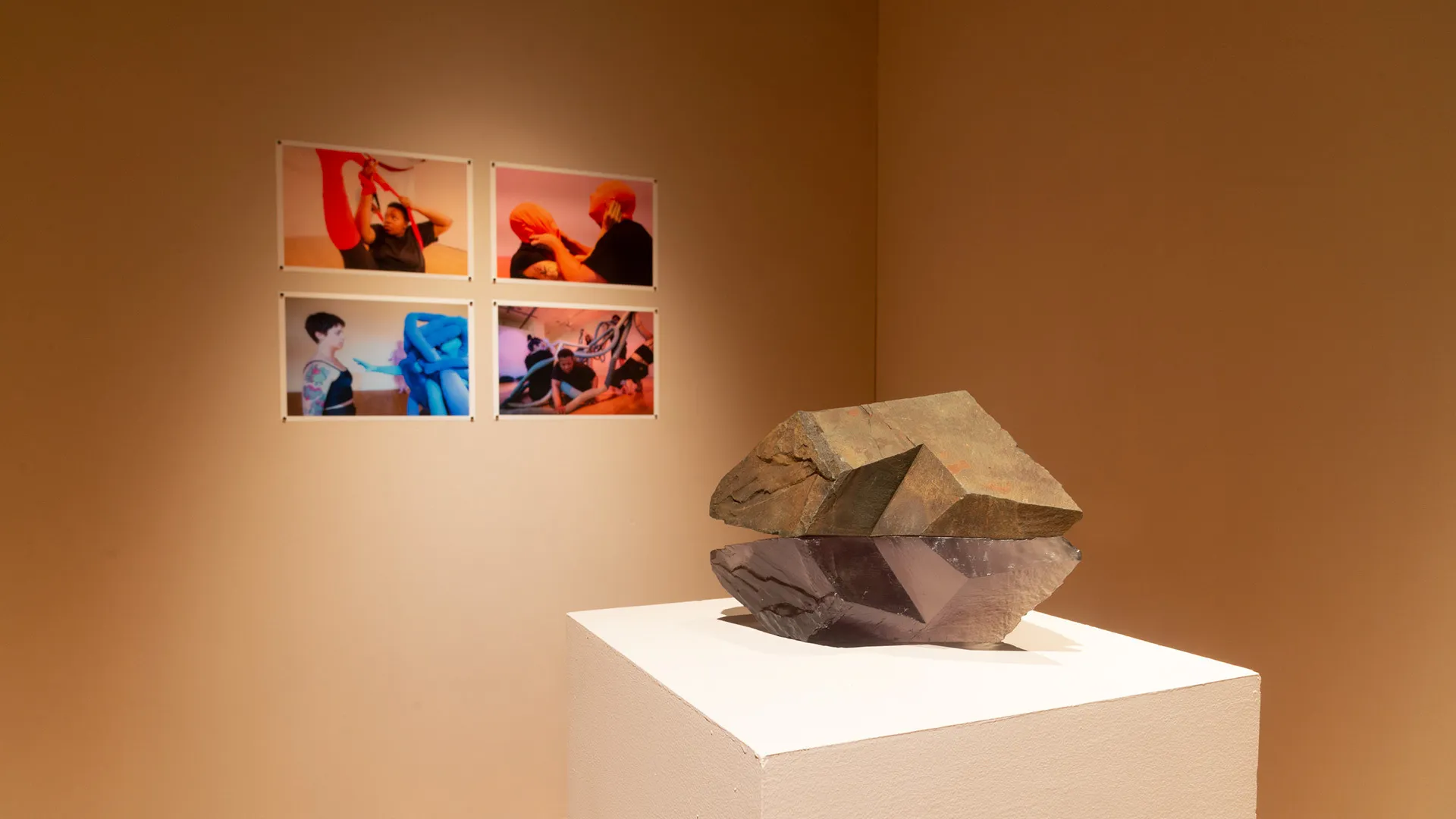
Professor John Ruppert incorporates found objects such as rocks, trees and vegetation in his art making as a way to “develop a heightened consciousness of our precarious existence on this planet.” His featured works “Rock Reflection #3” (above) and “Rock Reflection #4” present rocks that have been digitally “copied” through an intricate process of 3D scanning and printing in resin.
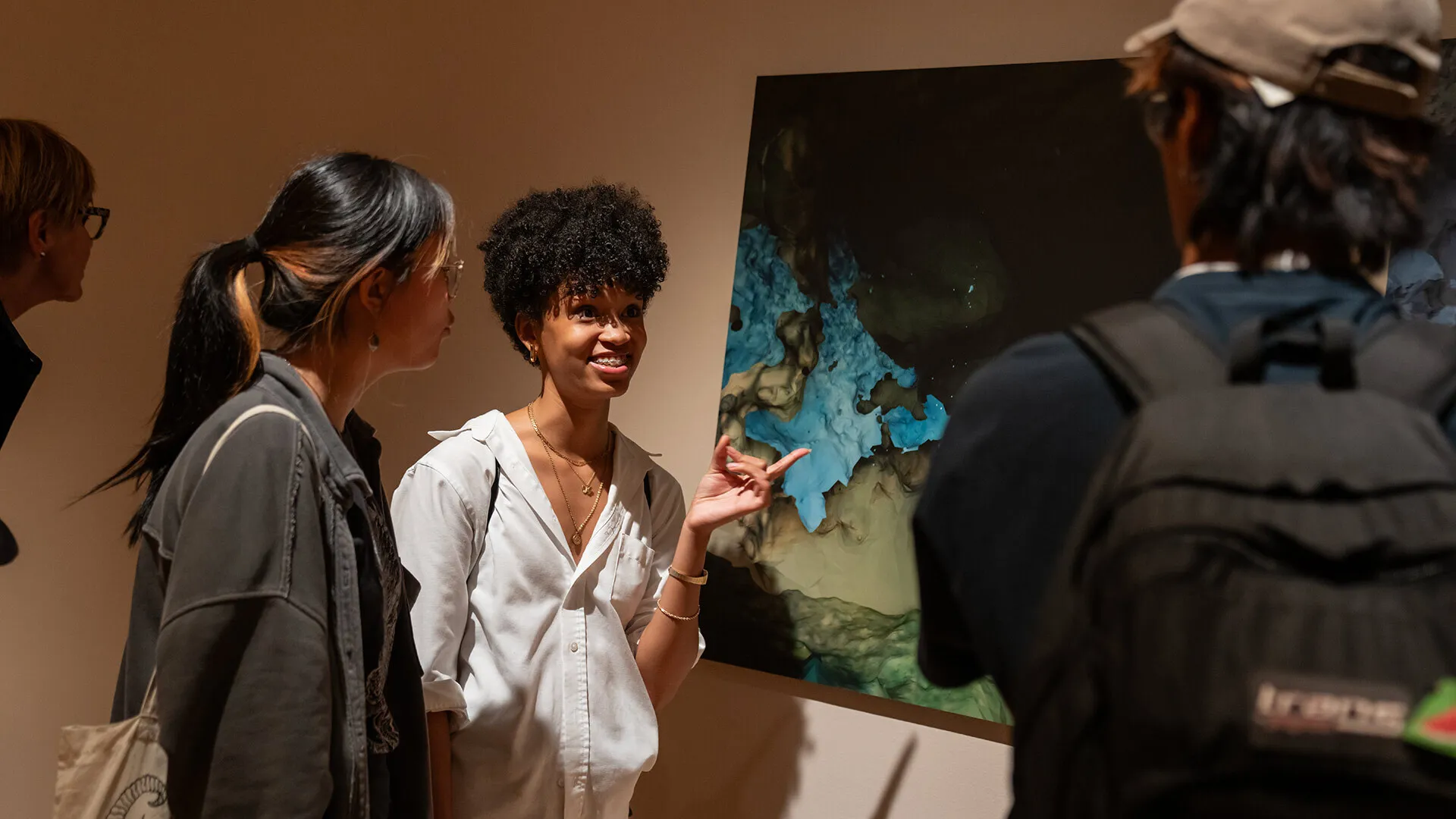
Over the course of a year, Assistant Professor Mollye Bendell spent countless hours on a kayak on Mallows Bay, Md., home to the largest ship graveyard in the Western Hemisphere. Bendell captured footage using an underwater camera rig and then digitally abstracted the source material to create the two prints on display, “Chasm” and “Beckon” (above) part of her body of work titled "how to breathe underwater."
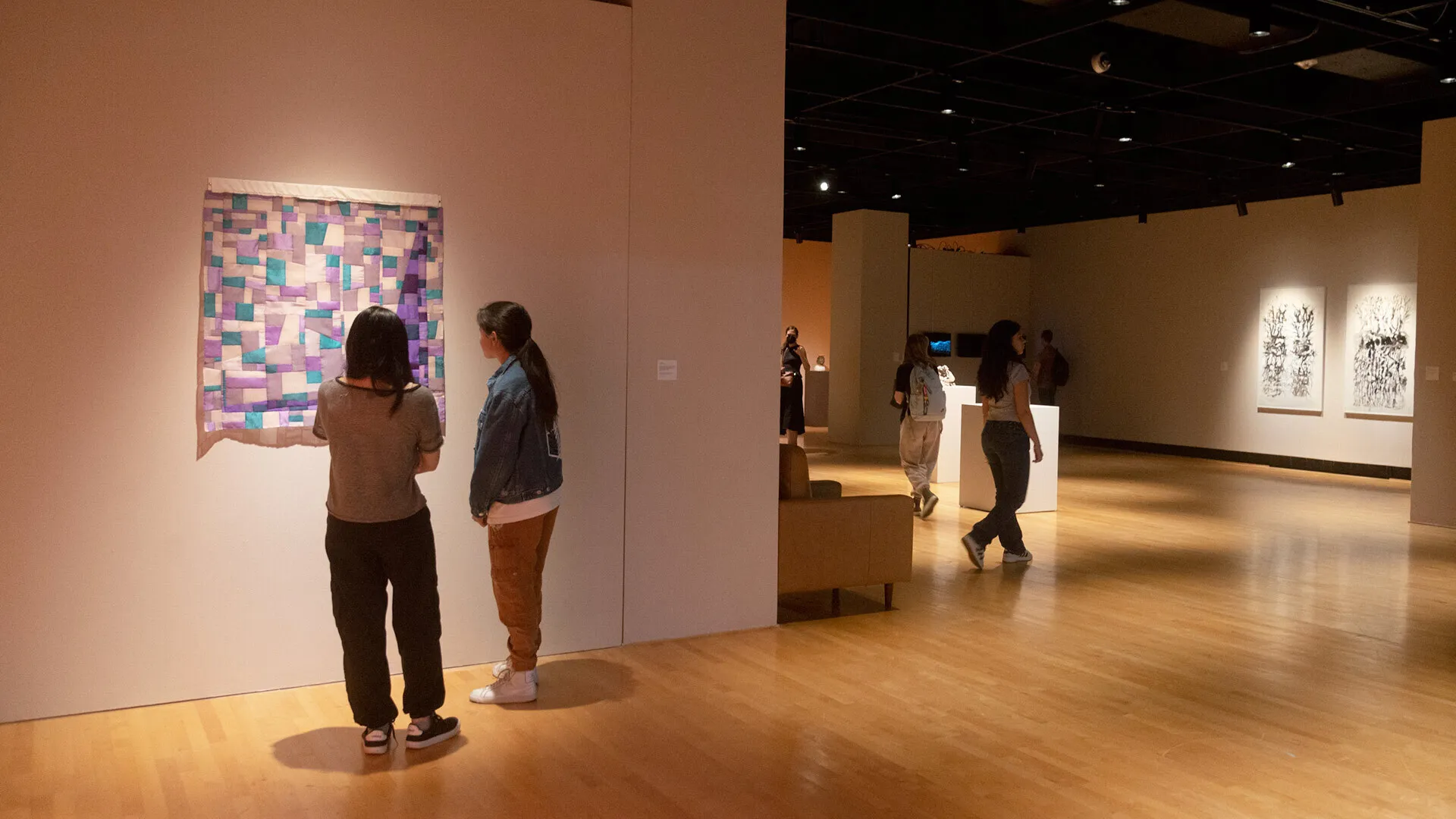
At first glance, lecturer Julia Kwon’s patchwork textiles appear to be in the style of Korean “bojagi,” traditional object wrapping created by Korean women during the Joseon Dynasty (1392–1910). But Kwon confounds expectations “by incorporating contemporary issues that [she is] deeply concerned about as a Korean American woman living in the U.S. today.” Integrating pie charts, graphs, maps and patterns into the textiles’ design, she seeks to “challenge perceived notions of Asiatic femininity” and argue for “more capacious possibilities for identity.” One of her featured works celebrates female-led K-pop fans who stand against hatred and systemic inequalities (above), while the other visualizes unhealthy air quality due to Canada’s wildfire smoke during summer 2023.
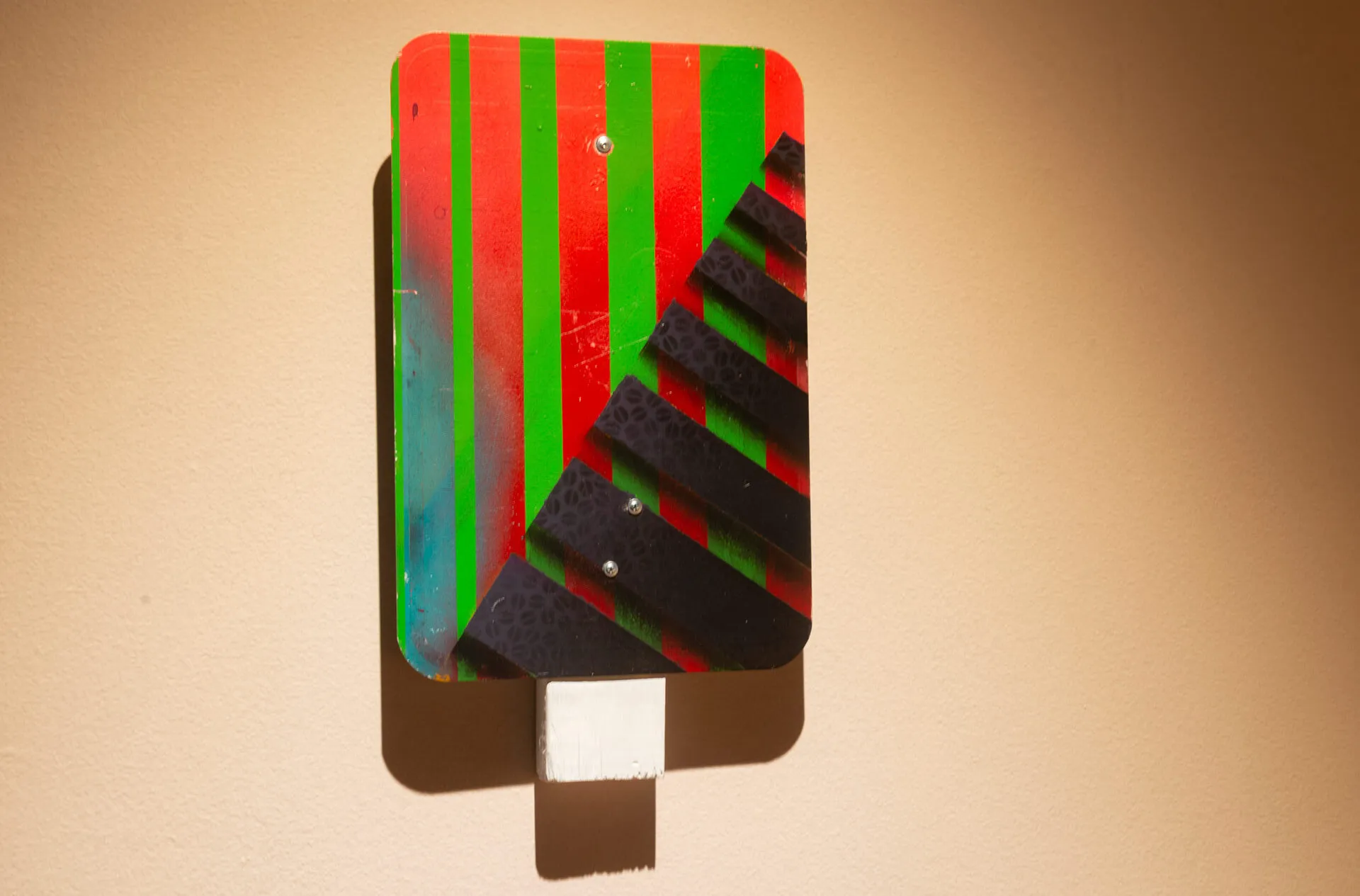
Beginning in his teens, Assistant Professor Brandon Donahue-Shipp found work at airbrush booths at carnivals, festivals and bar mitzvahs and in the custom automotive industry across the country. Today, he’s still interested in “collecting, customization and the transformation of objects using the airbrush.” To create his work “Street Sign,” he painted a found sign with a mixture of bright and dark colors to “demand the attention that signages give off, but without giving any specific instructions on what to do or think.”
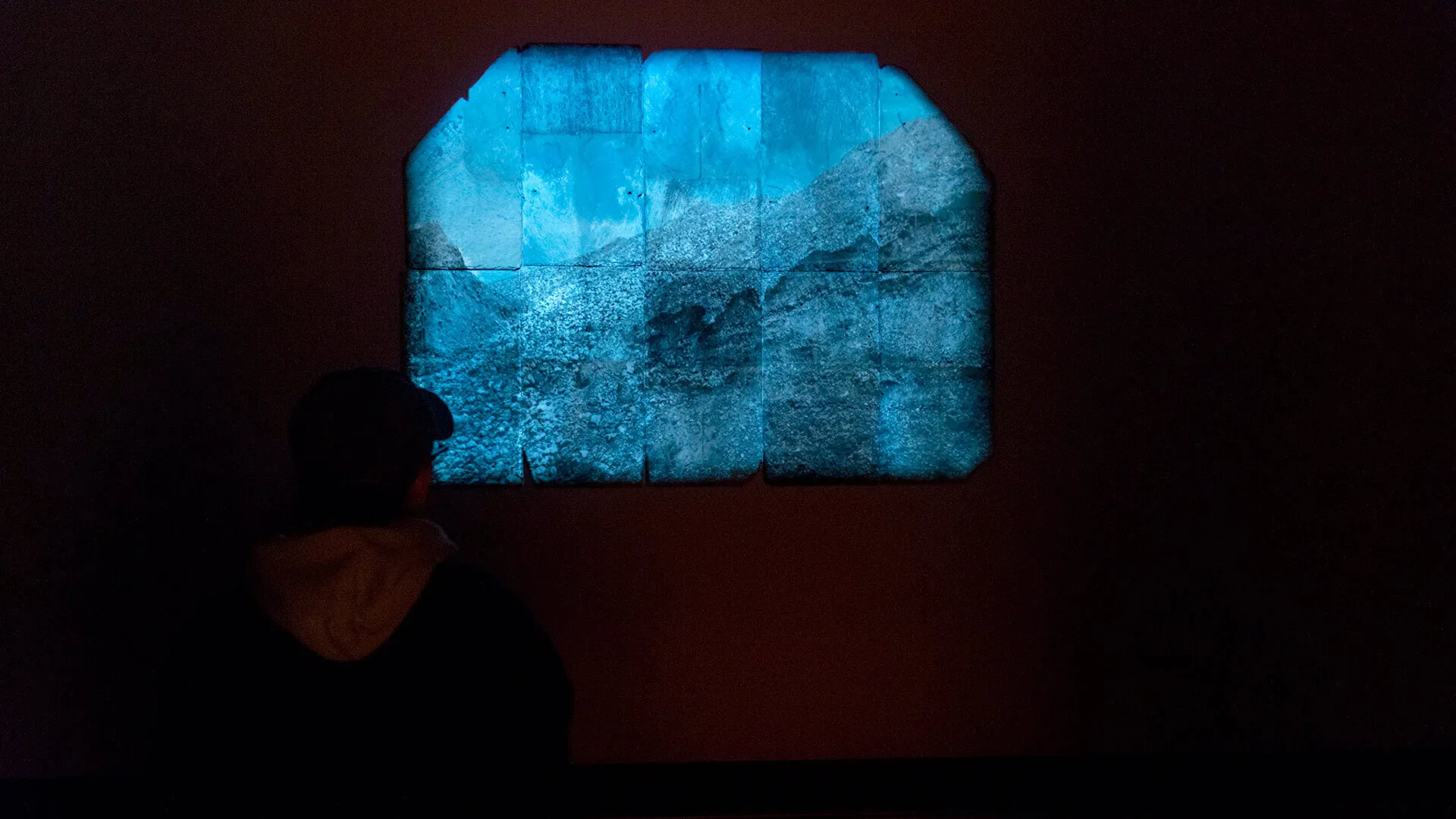
In her piece, “Rift,” Associate Professor Shannon Collis invites visitors to immerse themselves through sound and video into scenes in Baltimore “where water meets land.” Her abstract depictions of sites including the Curtis Bay industrial area, Masonville Cove and marine terminals highlight “the contrasts between natural environments and human industry” and demonstrate “how industry can often overpower local habitats and reshape the natural landscape.”
Faculty Exhibition 2024 runs until Dec. 6 at the UMD Art Gallery in the Parren J. Mitchell Art-Sociology Building.
Topics
Arts & Culture